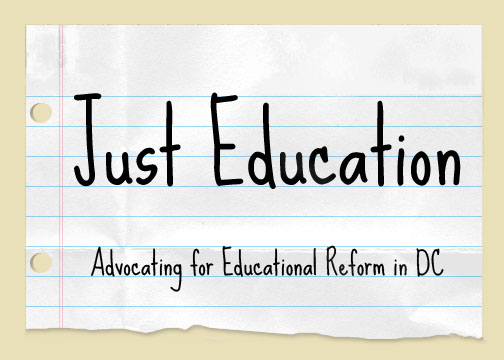By: Jonathon Munoz
The new decade finds America traveling on the long road of economic recovery. It is hard not to ignore the immediate effects of such a crisis. For example, as of Dec. 2009, 15.3 million Americans were unemployed with an unemployment rate of 10%[1]. At the beginning of the recession in December 2007 the unemployment rate was 0.5% with 7.7 unemployed Americans. It is important to mitigate the immediate negative effects of the crisis for obvious reasons, but there is a big difference between the semblance of economic stability and the real thing. With so much money being poured into the economy to promote stability and increase consumer confidence it is easy to focus on the symptoms of the crisis while ignoring its causes.
The current crisis gives us a unique opportunity to fundamentally change the way the country learns. If fiscal responsibility is truly a long-term goal for America, it must invest in education. We must create educational policies that foster innovation while promoting accountability, both on the part of local and state officials. A study by the Center for Labor Market Studies at Northwestern University recently reported that students who dropped out of high school were 63 times more likely to be in prison than students with a four-year college degree. Also, “on average, each high school dropout now costs taxpayers more than $292,000 in lower tax revenues, higher cash and in-kind transfer costs, and incarceration costs relative to the average high school graduate.”
[2]
The American Recovery and Reinvestment Act, the most recent stimulus package, is a piece of legislation worth $787.2 billion.[3] Now, it is not certain if this will completely save us, but it is fairly certain that it will get the markets moving with consumers doing what they do best. A study by McKinsey & Company showed that if students in states that scored below-average on the NAEP (National Assessment of Educational Progress) in 1983 had improved over a 15 year period, so that they performed at the national average, America’s GDP would be 3 to 5% higher. That amounts to $425 billion to $700 billion.[4] It is quite clear that educating students should not only be considered a moral or social responsibility but also an economic one.
Today only 40% of American adults earn a two-year or four-year degree and about 30% of students drop out of school without a diploma. That means that in a class of 20 students six of them will probably not make it to graduation, and only about eight of them will earn a degree. These are staggering results, especially in the light of the fact that education is the number one expenditure of states (21%).[5] Obviously, funds in the educational system are not being properly utilized. However, this is not only a state by state problem—it concerns the entire nation. In light of the economic situation, the Department of Education has been given $10 billion dollars in discretionary resources to incentivize state and local reforms. These state-oriented resources exceed all previous funding for any given administration combined. This is a great opportunity to improve our schools.
There are approximately 95,000 public schools in the U.S. Of those schools, about 2,000 high schools account for half of the nation’s dropout rates and three-quarters of our minority dropouts.[6] Knowing this, we should really begin to wonder why educational measures haven’t helped out much. We could blame student surroundings, and this often becomes a default response. In a recent article about Teach For America in The Atlantic, a local D.C. elementary teacher said this concerning her underperforming students: “The kids in Northwest [D.C.] go on trips to France, on cruises. They go places and their parents talk to them and take them to the library… Our parents on this side don’t have the know-how to raise their children. They’re not sure what it takes for their child to make it.”[7]
It is easy to blame parents, and it is even easier to blame socio-economic conditions. However, it is this very tendency of “localizing” the problem that is the cause for the discrepancy in performance. If America wishes to regain its edge in education it must counteract this blame-game by focusing on reforming the system. Education in the new decade should see a higher degree of cooperation between states. For example, sharing data systems that track student success and growth, or sharing results of schools which have modified the school structure (e.g. extending the school day). We should all work at innovating the system through purposeful reforms that reward high-performing schools instead of only punishing the bad ones (which is the current practice under No Child Left Behind). Education in the new decade should incentivize teachers, districts, and states to innovate. We can already see this happening with the Race to the Top Fund (a competitive fund rewarding states for educational reforms).
Even in this competitive apparatus we must not forget that education is a collective endeavor. We must not localize problems; doing so can only ensure that we keep treating the symptoms while never getting to the cause of the educational dilemma. We must interact with a student as if she were all students; her individual success is not without its global consequences. We have a social responsibility to educate America, and unless we realize that we also have a personal responsibility then we might as well give up now.
[1] Bureau of Labor Statistics U.S. Department of Labor. News Release: January 8, 2010. http://www.bls.gov/news.release/empsit.nr0.htm
[2] From “Lawmakers Who Lead-Secretary Arne Duncan’s Remarks to the National Conference of Legislatures.” http://www.ed.gov/news/speeches/2009/12/12102009.html
[3] From Track the Stimulus. http://trackthestimulus.com/Economic_Stimulus_Plan.aspx
[4] Ibid.
[5] Ibid.
[6] Ibid.
[7] Ripley, Amanda. “What makes a great teacher.“ The Atlantic. http://www.theatlantic.com/doc/201001/good-teaching/?pid=ynews

No comments:
Post a Comment